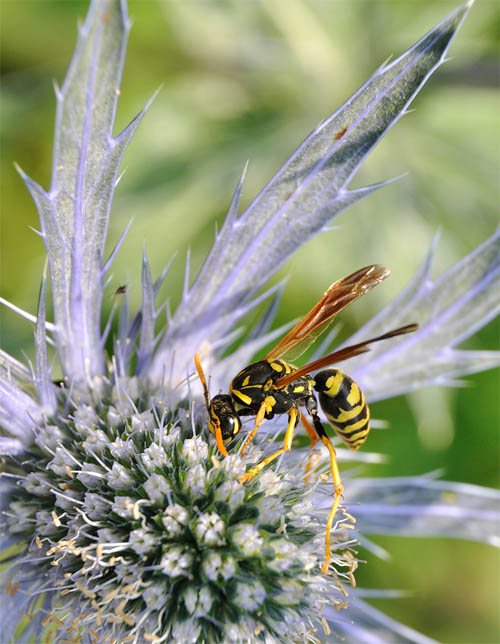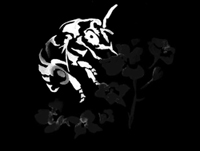Bees & Wasps (Order: Hymenoptera)
Ontario is home to some 400 species of wild bees, in addition to numerous species of wasps that visit flowers. While bees are “vegetarian”, some familiar wasps (e.g., yellow jackets, paper wasps) are highly effective predators of insect pests in addition to visiting flowers for nectar.
Bees are often usually considered the most important group of pollinators because they actively collect pollen and nectar to provide for their young. As a result, they visit many more flowers than other species which are foraging for their own needs only.
Encouraging wild bee populations requires that both habitat and off-bloom resources be available (i.e., non-crop plants that flower after the crop has bloomed). Many of Ontario's wild bees are ground-nesting species that require dry soil with decent structure and low-density vegetation. These nests are easily destroyed by deep tillage. Other native Ontario bees nest in cavities, hollow twigs or stems, and similar protected spaces.
Andrenid bee (photo by Stephen Marshall)
Red-tailed bumble bee (photo by Stephen Marshall)
Carpenter bee (photo by Stephen Marshall)
Small carpenter bee (photo by Stephen Marshall)

Paper wasp
